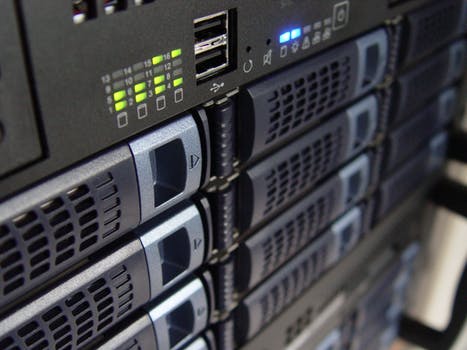TheDeveloperBlog.com
C-Sharp | Java | Python | Swift | GO | WPF | Ruby | Scala | F# | JavaScript | SQL | PHP | Angular | HTML
Virtual Memory
Virtual Memory with Definition and functions, OS Tutorial, Types of OS, Process Management Introduction, Attributes of a Process, Process Schedulers, CPU Scheduling, SJF Scheduling, FCFS with overhead, FCFS Scheduling etc.
Virtual MemoryVirtual Memory is a storage scheme that provides user an illusion of having a very big main memory. This is done by treating a part of secondary memory as the main memory. In this scheme, User can load the bigger size processes than the available main memory by having the illusion that the memory is available to load the process. Instead of loading one big process in the main memory, the Operating System loads the different parts of more than one process in the main memory. By doing this, the degree of multiprogramming will be increased and therefore, the CPU utilization will also be increased. How Virtual Memory Works?
In modern word, virtual memory has become quite common these days. In this scheme, whenever some pages needs to be loaded in the main memory for the execution and the memory is not available for those many pages, then in that case, instead of stopping the pages from entering in the main memory, the OS search for the RAM area that are least used in the recent times or that are not referenced and copy that into the secondary memory to make the space for the new pages in the main memory. Since all this procedure happens automatically, therefore it makes the computer feel like it is having the unlimited RAM. Demand Paging
Demand Paging is a popular method of virtual memory management. In demand paging, the pages of a process which are least used, get stored in the secondary memory. A page is copied to the main memory when its demand is made or page fault occurs. There are various page replacement algorithms which are used to determine the pages which will be replaced. We will discuss each one of them later in detail. Snapshot of a virtual memory management system
Let us assume 2 processes, P1 and P2, contains 4 pages each. Each page size is 1 KB. The main memory contains 8 frame of 1 KB each. The OS resides in the first two partitions. In the third partition, 1st page of P1 is stored and the other frames are also shown as filled with the different pages of processes in the main memory. The page tables of both the pages are 1 KB size each and therefore they can be fit in one frame each. The page tables of both the processes contain various information that is also shown in the image. The CPU contains a register which contains the base address of page table that is 5 in the case of P1 and 7 in the case of P2. This page table base address will be added to the page number of the Logical address when it comes to accessing the actual corresponding entry. 
Advantages of Virtual Memory
Disadvantages of Virtual Memory
Next TopicTranslation Look aside Buffer
|
Related Links:
- Learn Operating System (OS) Tutorial
- OS Process Management Introduction
- OS Convoy Effect in FCFS
- OS Attributes of a Process
- OS Process States
- OS Process Schedulers
- OS Burst Time Prediction
- OS SRTF scheduling Algorithm
- OS Process Queues
- OS Various Times Related to Process
- OS CPU Scheduling
- OS Scheduling Algorithms
- OS FCFS Scheduling
- OS FCFS with overhead
- OS SJF Scheduling
- OS SRTF GATE 2011 Example
- OS Round Robin Scheduling Algorithm
- OS RR scheduling Example
- OS HRRN Scheduling
- OS HRNN Example
- OS Priority Scheduling
- OS Non Preemptive Priority Scheduling
- OS Preemptive Priority Scheduling
- OS SRTF:IO bound processes
- OS Process Synchronization Introduction
- OS TSL Mechanism
- OS Memory Management Introduction
- OS Critical Section Problem
- OS Lock Variable Mechanism
- OS Priority Inversion in TSL
- OS Turn Variable or Strict Alternation
- OS Interested Variable Mechanism
- OS Paterson Solution
- OS Virtualization
- OS Synchronization Mechanism Without Busy Waiting
- OS Sleep and Wake
- OS Semaphore Introduction
- OS Counting Semaphore
- OS Problem on counting semaphore
- OS GATE 2014 question on TLB
- OS Binary Semaphore or Mutex
- OS Deadlocks Introduction
- OS Strategies Handling Deadlocks
- OS Deadlock Prevention
- OS Deadlock Avoidance
- OS Resource Allocation Graph
- OS Deadlock Detection using RAG
- OS Deadlock Detection and Recovery
- OS Fixed Partitioning
- OS Dynamic Partitioning
- OS Compaction
- OS Bit Map for Dynamic Partitioning
- OS Linked List for Dynamic Partitioning
- OS Partitioning Algorithms
- OS GATE Question on Best Fit and First Fit
- OS Need for Paging
- OS Paging with Example
- OS Basics of Binary Addresses
- OS Physical and Logical Address Space
- OS Page Table
- OS Translation Look aside Buffer
- OS Mapping from page table to main memory
- OS Page Table Entry
- OS Page Table Size
- OS Finding Optimal Page Size
- Virtual Memory
- OS Demand Paging
- OS Inverted Page Table
- OS Segmentation
- OS Page Replacement Algorithms
- OS Gate 2015 question on LRU and FIFO
- OS Numerical on LRU, FIFO and Optimal
- OS Beladys Anamoly
- OS Paging VS Segmentation
- OS Segmented Paging
- OS Attributes File
- OS Operations on the File
- OS File Access Methods
- OS Directory Structure
- OS Single level Directory
- OS Two level Directory
- OS Tree structured Directory
- OS Acyclic Graph Directories
- OS Allocation Methods
- OS File System
- OS File System Structure
- OS Master Boot Record
- OS On Disk Data Structures
- OS In memory Data structures
- OS Directory Implementation
- OS Contiguous Allocation
- OS Linked List Allocation
- OS File Allocation Table
- OS Indexed Allocation
- OS Linked Index Allocation
- OS Inode
- OS Free space Management
- OS Disk Scheduling
- OS FCFS Scheduling Algorithm
- OS SSTF Scheduling Algorithm
- OS SCAN and C-SCAN Algorithm
- OS Look and C-Look Scheduling
- OS Numerical on SSTF and SCAN
- OS Numerical on Disk Scheduling


